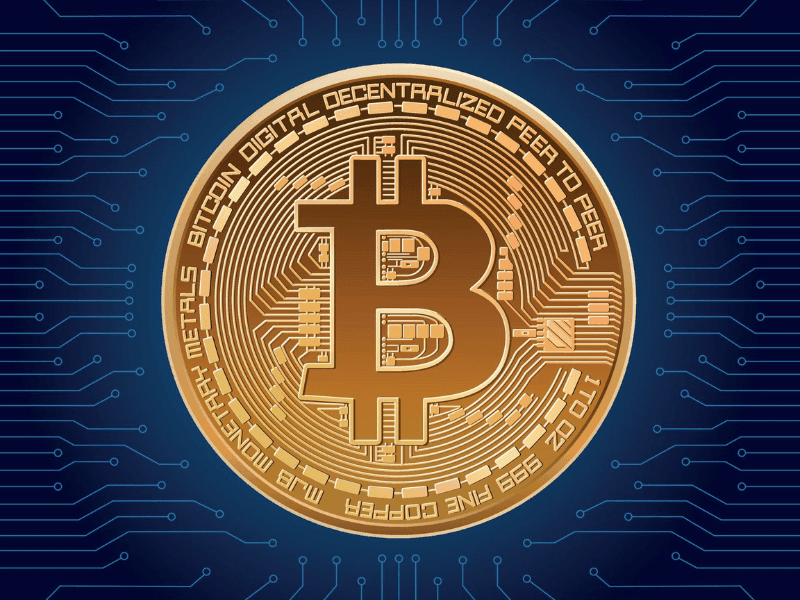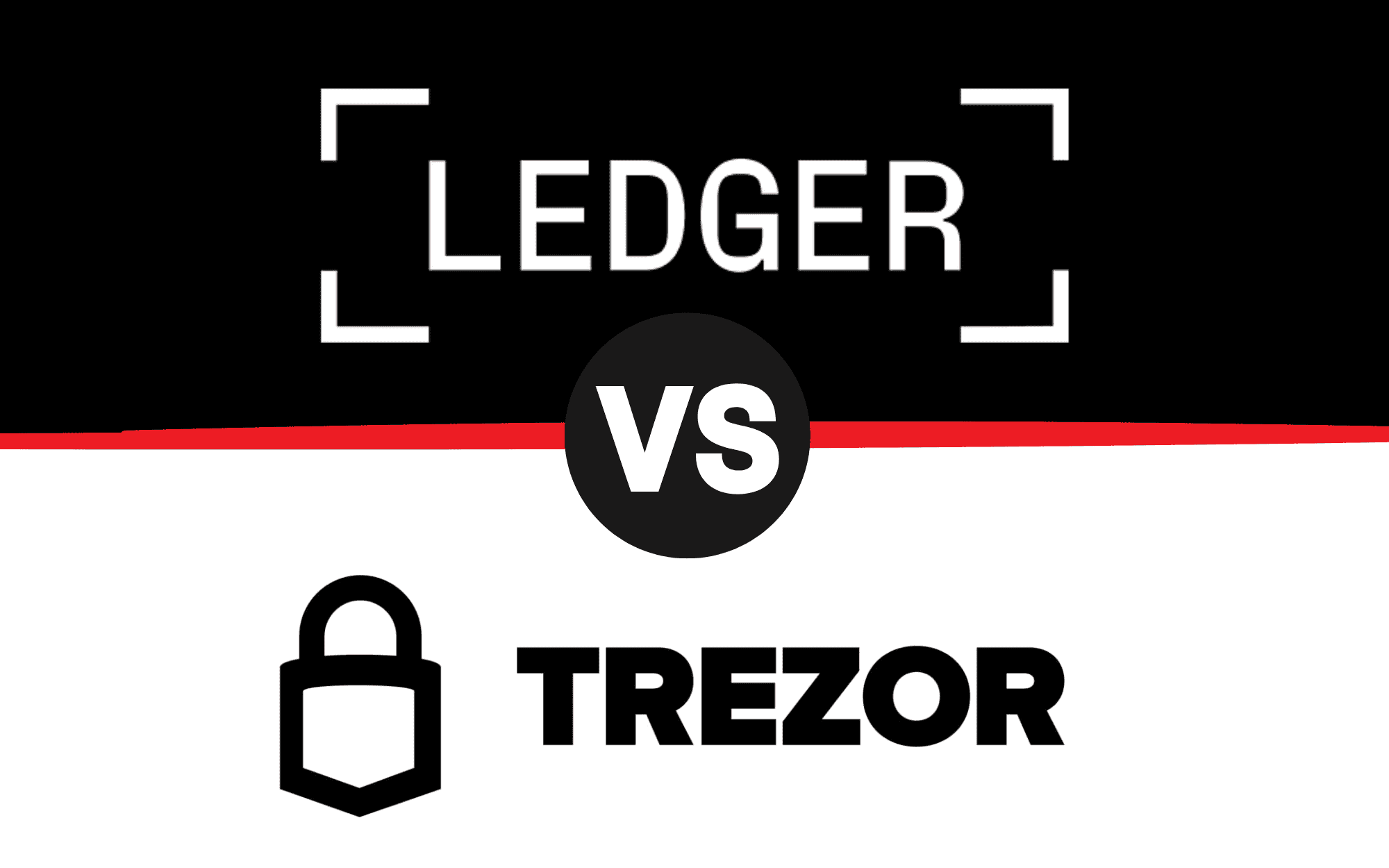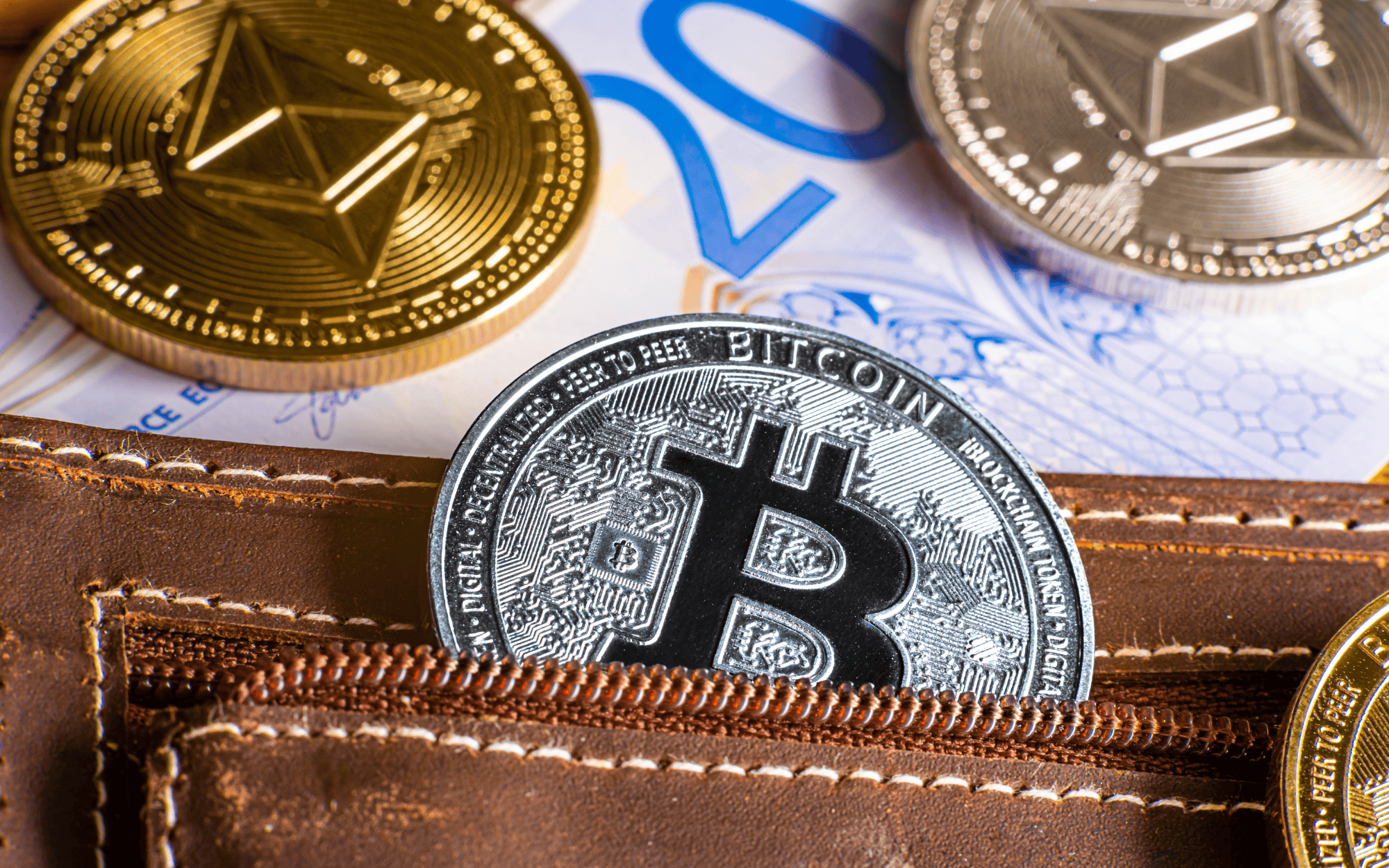Welcome to our comprehensive Bitcoin Guide, where we delve into the fascinating world of the first and most popular cryptocurrency. Since its inception in 2009, Bitcoin has revolutionized the way we perceive and interact with money. Powered by blockchain technology, it offers a decentralized, secure, and transparent method of conducting transactions. Whether you’re a curious beginner or an experienced investor, this Bitcoin Guide will provide valuable insights into its history, functionality, and potential to shape the future of finance.
What Is Bitcoin?
Bitcoin is the world’s first decentralized digital currency, created in 2009 by an anonymous figure or group known as Satoshi Nakamoto. Unlike traditional currencies controlled by governments or financial institutions, Bitcoin operates on a peer-to-peer network, enabling users to send and receive payments directly without intermediaries.
At its core, Bitcoin relies on blockchain technology, a secure and transparent ledger that records all transactions. Each Bitcoin transaction is validated by network participants, known as miners, ensuring that the system remains trustless and tamper-proof.
Bitcoin is often referred to as “digital gold” because of its finite supply—only 21 million coins will ever exist. This scarcity, combined with its decentralized nature, has made Bitcoin a popular choice for those seeking an alternative to traditional fiat currencies or a hedge against inflation.
Some of the key features that define Bitcoin include:
- Decentralization: No single entity controls the Bitcoin network.
- Security: Transactions are protected by advanced cryptographic algorithms.
- Transparency: Every transaction is recorded on a public ledger accessible to all.
Bitcoin’s revolutionary approach to digital currency has not only redefined how we think about money but has also paved the way for thousands of other cryptocurrencies, collectively known as altcoins. Whether used as a store of value, a medium of exchange, or a foundation for decentralized applications, Bitcoin continues to lead the charge in the evolving world of digital finance.
The History of Bitcoin
The journey of Bitcoin began in 2008 during the global financial crisis, when an anonymous entity known as Satoshi Nakamoto published the revolutionary Bitcoin whitepaper titled “Bitcoin: A Peer-to-Peer Electronic Cash System.” This document outlined a decentralized digital currency that could operate without the need for traditional banks or financial intermediaries.
Early Beginnings (2009-2010)
In January 2009, Nakamoto mined the first block of the Bitcoin blockchain, known as the Genesis Block, marking the official launch of Bitcoin. The first-ever Bitcoin transaction occurred shortly after, with Nakamoto sending 10 BTC to developer Hal Finney.
By 2010, Bitcoin had started gaining traction as a viable digital currency. In May of that year, the infamous “Bitcoin Pizza Day” took place, where 10,000 BTC were used to buy two pizzas—showcasing Bitcoin’s potential as a medium of exchange.
Growth and Milestones (2011-2017)
Bitcoin’s rise in popularity led to the creation of altcoins like Litecoin and Ethereum, which sought to improve upon Bitcoin’s design. During this period, Bitcoin became the go-to cryptocurrency for digital transactions and investment. By 2013, Bitcoin reached a significant milestone when its price surpassed $1,000 for the first time.
The year 2017 was a pivotal moment in Bitcoin’s history as it reached an all-time high of nearly $20,000. This surge in value was fueled by growing interest from institutional investors and retail traders alike.
Mainstream Adoption (2018-Present)
Despite periods of volatility, Bitcoin has continued to grow as a major player in global finance. In 2021, El Salvador became the first country to adopt Bitcoin as legal tender, signaling its increasing legitimacy on the world stage. Bitcoin’s role as “digital gold” has solidified its place in investment portfolios, and innovations like the Lightning Network aim to address scalability challenges.
Why Understanding Bitcoin’s History Matters
Learning about the history of Bitcoin is crucial to understanding its transformative impact on global finance. As highlighted in this Bitcoin Guide, Bitcoin has evolved from a niche digital currency to a mainstream financial asset that continues to shape the future of money.
For more insights, explore resources like the Bitcoin Whitepaper and analysis from CoinDesk.
How Bitcoin Works
At its core, Bitcoin is powered by blockchain technology, a decentralized ledger that records all transactions securely and transparently. This section of our Bitcoin Guide explores the fundamental processes that make Bitcoin function as a revolutionary digital currency.
1. Blockchain Technology
Bitcoin operates on a blockchain, a chain of blocks that store transaction data. Each block contains:
- Transaction Details: Sender, receiver, and amount.
- Timestamp: The exact time of the transaction.
- Hash: A unique cryptographic code that links the block to its predecessor, ensuring data integrity.
Blockchain’s decentralized nature ensures that no single entity controls the network, making it secure and tamper-proof. Learn more about blockchain from IBM’s Blockchain Guide.
2. Mining and Proof of Work
Bitcoin transactions are validated through a process called mining. Miners solve complex mathematical problems using computational power to add new blocks to the blockchain. This mechanism, known as Proof of Work (PoW), ensures the legitimacy of transactions while securing the network.
Mining also introduces new Bitcoins into circulation, with rewards halving approximately every four years—a process known as the Bitcoin Halving. This scarcity contributes to Bitcoin’s value and is explained further on Investopedia.
3. Wallets and Keys
To store and transact Bitcoin, users need a Bitcoin wallet, which can be software-based (hot wallets) or hardware devices (cold wallets). Wallets use:
- Public Keys: Addresses visible on the blockchain for receiving funds.
- Private Keys: Secure keys used to authorize transactions.
Always ensure your private keys are stored securely, as losing them means losing access to your Bitcoin. Explore secure wallet options on CoinDesk.
4. Decentralized Network
Bitcoin’s decentralized network consists of thousands of nodes that verify and store blockchain data. Each transaction is broadcast across the network, ensuring transparency and security. This decentralization eliminates the need for intermediaries like banks, allowing peer-to-peer transactions globally.
5. Transaction Process
Here’s how a typical Bitcoin transaction works:
- A user initiates a transaction by sending Bitcoin to another wallet address.
- The transaction is broadcast to the network for validation.
- Miners validate the transaction and add it to a block.
- The block is added to the blockchain, and the transaction is confirmed.
Transactions are usually confirmed within 10 minutes, but network congestion can impact processing times. Check current transaction speeds on Blockchain.com.
Key Features of Bitcoin
Bitcoin is not just the first cryptocurrency; it is a trailblazer that set the standard for the digital economy. Its unique characteristics make it stand out as a secure, transparent, and decentralized currency. In this Bitcoin Guide, we’ll explore the key features that define Bitcoin and make it a revolutionary asset.
1. Decentralization
One of Bitcoin’s most defining features is decentralization. Unlike traditional currencies, which are managed by central banks, Bitcoin operates on a peer-to-peer network. This eliminates the need for intermediaries, giving users full control over their transactions. Learn more about decentralization and its benefits on CoinDesk.
2. Transparency
Bitcoin transactions are recorded on a public ledger, the blockchain, which is accessible to anyone. This transparency ensures that all transactions can be verified by the network, reducing the risk of fraud. For a deeper dive into blockchain transparency, visit IBM Blockchain.
3. Immutability
Once a transaction is added to the Bitcoin blockchain, it cannot be altered or deleted. This immutability ensures that all records are permanent and tamper-proof, making Bitcoin a trusted and secure digital asset. Immutability is a cornerstone of blockchain technology, as highlighted in this Investopedia article.
4. Limited Supply
Bitcoin has a capped supply of 21 million coins, a feature designed to mimic the scarcity of precious metals like gold. This fixed supply ensures that Bitcoin remains resistant to inflation, making it an attractive store of value. Learn more about Bitcoin’s scarcity and its impact on the market at Blockchain.com.
5. Security
Bitcoin is secured by advanced cryptographic algorithms and its Proof of Work (PoW) consensus mechanism. The decentralized network of miners ensures that the blockchain remains resistant to attacks, providing users with confidence in its security. For insights into Bitcoin’s security measures, visit CryptoSlate.
6. Accessibility
Bitcoin is accessible to anyone with an internet connection, making it a global currency. Users can send and receive Bitcoin 24/7, without restrictions on borders or banking hours. This accessibility is particularly impactful in regions with limited access to traditional financial systems.
7. Pseudonymity
While Bitcoin transactions are transparent, users remain pseudonymous. Wallet addresses are not linked to personal information, providing a layer of privacy. For more on Bitcoin’s privacy features, check out Bitcoin.org.
Use Cases of Bitcoin
Bitcoin’s versatility goes beyond being a digital currency. Its unique properties, including decentralization, security, and transparency, have enabled a wide range of applications across various industries. In this Bitcoin Guide, we’ll explore the most impactful use cases of Bitcoin, showcasing its transformative potential.
1. Digital Currency for Transactions
Bitcoin’s primary use case is as a digital currency for peer-to-peer transactions. It enables users to send and receive funds globally without intermediaries, making transactions faster and more cost-effective than traditional banking systems. Businesses worldwide, such as Overstock and Microsoft, now accept Bitcoin as a payment method. Learn more about Bitcoin’s role in payments at CoinDesk.
2. Store of Value
Often referred to as “digital gold,” Bitcoin is widely used as a store of value. Its limited supply of 21 million coins ensures scarcity, making it an attractive hedge against inflation. Investors consider Bitcoin a reliable asset for preserving wealth, similar to traditional precious metals. For insights into Bitcoin’s scarcity and store-of-value proposition, visit Investopedia.
3. Cross-Border Payments
Bitcoin revolutionizes international transactions by eliminating the need for banks and currency exchanges. Users can send money across borders in minutes with minimal fees compared to traditional remittance services. This makes Bitcoin an essential tool for financial inclusion in underbanked regions. Explore more on Bitcoin’s cross-border impact at Blockchain.com.
4. Decentralized Finance (DeFi)
Bitcoin is increasingly being integrated into the decentralized finance (DeFi) ecosystem. Through platforms like Wrapped Bitcoin (WBTC), users can leverage Bitcoin in DeFi protocols for lending, borrowing, and yield farming. DeFi expands Bitcoin’s use cases beyond simple transactions. Learn more about Bitcoin in DeFi at CryptoSlate.
5. Charitable Donations
Bitcoin has become a popular choice for charitable donations due to its transparency and global reach. Organizations like the Red Cross and Save the Children accept Bitcoin, ensuring that funds are securely transferred and used as intended. Visit Bitcoin for Charity for examples of nonprofits accepting Bitcoin.
6. Investment and Trading
Bitcoin remains a top choice for traders and investors due to its high liquidity and market dominance. It can be traded on major exchanges like Binance, Bybit, and OKX, offering opportunities for profit through spot, margin, and futures trading. Check out trading strategies on Binance Academy.
7. Micropayments and Tipping
Thanks to the Lightning Network, Bitcoin enables fast and low-cost micropayments. Content creators and online platforms use Bitcoin for tipping, rewarding users for their contributions. This application is growing in popularity in the gig economy and digital content space.
Advantages and Disadvantages of Bitcoin
Bitcoin has revolutionized the financial world with its innovative features and use cases, but like any technology, it comes with both advantages and disadvantages. In this Bitcoin Guide, we’ll explore the benefits and challenges associated with the world’s first cryptocurrency.
Advantages of Bitcoin
1. Decentralization
Bitcoin operates on a decentralized network, removing the need for central authorities like banks or governments. This ensures that users maintain full control over their funds, making Bitcoin a more democratic financial system. Learn more about decentralization at CoinDesk.
2. Security
Bitcoin transactions are secured by advanced cryptographic algorithms and the Proof of Work (PoW) consensus mechanism, making the network highly resistant to fraud and hacking attempts.
3. Transparency
The blockchain ledger records every Bitcoin transaction, ensuring full transparency and accountability. This feature builds trust among users and reduces the likelihood of corruption. Visit IBM Blockchain to learn more.
4. Global Accessibility
Bitcoin enables anyone with an internet connection to send and receive funds, breaking down barriers in regions with limited access to traditional banking systems.
5. Inflation Resistance
With its capped supply of 21 million coins, Bitcoin is immune to inflation caused by excessive money printing. This scarcity makes it a reliable store of value, often compared to gold.
6. Fast and Low-Cost Transactions
Bitcoin allows for quick and cost-effective transactions, especially across borders. Traditional financial systems often involve high fees and long processing times, which Bitcoin mitigates.
Disadvantages of Bitcoin
1. Price Volatility
Bitcoin’s value is highly volatile, with prices fluctuating dramatically over short periods. This makes it a risky asset for investors and impractical for everyday transactions.
2. Scalability Issues
Bitcoin struggles with scalability due to its limited transaction processing capacity, often leading to network congestion and higher fees during peak periods. Learn about scalability solutions like the Lightning Network on CryptoSlate.
3. Regulatory Uncertainty
Governments worldwide are still figuring out how to regulate Bitcoin, leading to legal and tax uncertainties for users. Some countries have even banned cryptocurrency usage altogether.
4. Environmental Concerns
Bitcoin’s mining process consumes significant amounts of energy, raising concerns about its environmental impact. Efforts to transition to greener consensus mechanisms are ongoing but not yet widespread.
5. Limited Adoption
While adoption is growing, Bitcoin is still not universally accepted as a payment method, limiting its usability in the mainstream economy.
6. Risk of Loss
Bitcoin wallets rely on private keys for access. If a user loses their private key, they lose access to their funds permanently.
Balancing the Pros and Cons
Understanding the advantages and disadvantages of Bitcoin is essential for making informed decisions about its use as a currency or investment. While Bitcoin’s decentralization, security, and inflation resistance are groundbreaking, challenges like volatility and environmental concerns highlight areas for improvement.
For a deeper analysis of Bitcoin’s benefits and drawbacks, visit resources like Investopedia and Blockchain.com.
Bitcoin Mining
Bitcoin Mining
Bitcoin mining is a cornerstone of the Bitcoin network, ensuring its security, decentralization, and operation. This process involves validating transactions and adding them to the blockchain, all while introducing new Bitcoins into circulation. Let’s dive into this critical aspect of Bitcoin in our Bitcoin Guide.
1. What Is Bitcoin Mining?
Bitcoin mining is the process by which transactions are verified and added to the blockchain. Miners use specialized computers to solve complex mathematical puzzles, competing to validate the next block of transactions. The first miner to solve the puzzle earns a reward in Bitcoin, incentivizing their participation.
This decentralized mechanism eliminates the need for a central authority, ensuring that the network remains trustless and secure. Learn more about mining basics on Bitcoin.org.
2. The Role of Proof of Work (PoW)
Mining relies on the Proof of Work (PoW) consensus mechanism, which requires miners to perform computational work to validate transactions. This system ensures:
- Security: Prevents fraud and double-spending.
- Immutability: Once a block is added, it cannot be altered.
- Decentralization: Distributed across thousands of nodes globally.
Read more about PoW and its impact on blockchain security at Investopedia.
3. Rewards and Halving Events
Miners are rewarded with newly created Bitcoins and transaction fees for validating a block. However, Bitcoin’s design includes a halving mechanism, reducing mining rewards by 50% approximately every four years. This ensures scarcity and long-term value.
For example:
- In 2009, the reward was 50 BTC per block.
- By 2020, it reduced to 6.25 BTC per block.
Upcoming halving events are eagerly anticipated as they influence Bitcoin’s price and mining profitability.
4. The Energy Debate
Bitcoin mining is energy-intensive, sparking debates about its environmental impact. The computational power required for PoW consumes significant electricity, with some mining operations relying on fossil fuels.
Efforts are underway to address these concerns, such as:
- Transitioning to renewable energy sources.
- Exploring alternative consensus mechanisms like Proof of Stake (PoS).
Learn more about the energy impact of mining on CryptoSlate.
5. Mining Hardware and Pools
To mine Bitcoin, specialized hardware called Application-Specific Integrated Circuits (ASICs) is required. These machines are designed specifically for mining, offering high efficiency.
Due to the competitive nature of mining, many individuals join mining pools, combining computational power to increase their chances of earning rewards. Popular pools include F2Pool and Slush Pool.
6. Challenges in Bitcoin Mining
Mining is not without its challenges:
- High Costs: Expensive hardware and electricity costs.
- Increasing Difficulty: As more miners join the network, solving puzzles becomes harder.
- Environmental Concerns: Mining’s carbon footprint raises sustainability questions.
Bitcoin’s Role in the Economy
Bitcoin has transcended its origins as a digital currency to become a transformative force in the global economy. Its unique features, such as decentralization, transparency, and finite supply, position it as a groundbreaking financial asset. This section of our Bitcoin Guide explores Bitcoin’s evolving economic role.
1. A Global Currency Without Borders
Bitcoin eliminates the need for intermediaries like banks, enabling peer-to-peer transactions worldwide. Its borderless nature makes it an efficient medium for cross-border payments, reducing transaction times and fees. This capability has led to its widespread use in remittances, particularly in regions with limited access to traditional banking systems.
For insights into Bitcoin’s impact on remittances, visit CoinDesk.
2. Digital Gold and Store of Value
Often referred to as “digital gold,” Bitcoin is increasingly seen as a hedge against inflation and a store of value. Its capped supply of 21 million coins ensures scarcity, much like gold. Investors and institutions view Bitcoin as a way to diversify portfolios and preserve wealth, especially during economic uncertainty.
Learn more about Bitcoin’s scarcity and its comparison to gold on Investopedia.
3. Financial Inclusion
Bitcoin plays a vital role in providing financial access to the unbanked and underbanked populations. By requiring only an internet connection, it empowers individuals in developing nations to participate in the global economy, fostering economic inclusion and independence.
Explore Bitcoin’s role in financial inclusion at Blockchain.com.
4. Institutional Adoption
Bitcoin’s growing legitimacy is reflected in its adoption by major financial institutions and corporations. Companies like Tesla and MicroStrategy hold Bitcoin as part of their reserves, while payment platforms like PayPal and Square allow users to transact in Bitcoin. These developments signal Bitcoin’s acceptance as a mainstream financial asset.
Discover more about institutional adoption on CryptoSlate.
5. Bitcoin as Legal Tender
In 2021, El Salvador made history by becoming the first country to adopt Bitcoin as legal tender, paving the way for other nations to explore cryptocurrency integration. This bold move highlights Bitcoin’s potential to coexist with traditional fiat currencies in national economies.
For details on Bitcoin’s adoption in El Salvador, visit CoinTelegraph.
6. Decentralized Finance (DeFi)
Bitcoin’s integration into the DeFi ecosystem has expanded its use cases. Through platforms like Wrapped Bitcoin (WBTC), users can leverage Bitcoin for lending, borrowing, and earning yields. This convergence of Bitcoin and DeFi represents the future of decentralized financial systems.
Read more about Bitcoin in DeFi on Binance Academy.
7. Challenges to Bitcoin’s Economic Role
While Bitcoin’s economic impact is profound, challenges remain:
- Volatility: Bitcoin’s price fluctuations limit its use as a stable currency.
- Regulatory Uncertainty: Governments are still grappling with how to regulate Bitcoin.
- Environmental Concerns: Energy-intensive mining processes raise sustainability issues.
Bitcoin Regulation
As Bitcoin continues to grow in popularity and adoption, its regulatory landscape has become a critical aspect of its evolution. Governments worldwide are working to establish frameworks for Bitcoin, balancing its benefits with potential risks. In this section of our Bitcoin Guide, we explore how Bitcoin is regulated across the globe and what it means for users and businesses.
1. Global Perspectives on Bitcoin Regulation
Regulation varies significantly by country, reflecting differing priorities and attitudes toward cryptocurrencies:
- United States: The U.S. treats Bitcoin as property for tax purposes, with strict regulations on trading platforms to ensure compliance with anti-money laundering (AML) and know-your-customer (KYC) laws.
- European Union: The EU has taken steps toward unified regulation with the Markets in Crypto-Assets (MiCA) framework, aiming to protect consumers and foster innovation.
- China: Bitcoin transactions and mining are banned, reflecting the government’s restrictive stance on cryptocurrencies.
- El Salvador: In contrast, El Salvador has embraced Bitcoin as legal tender, integrating it into the national economy.
For an in-depth analysis of global Bitcoin regulation, visit CoinTelegraph.
2. Why Is Regulation Important?
Bitcoin’s decentralized nature poses challenges for traditional financial systems. Regulation is essential to:
- Protect Consumers: Safeguard users from fraud and market manipulation.
- Prevent Illicit Activities: Combat money laundering and terrorist financing.
- Encourage Adoption: Provide clarity and legitimacy to attract institutional investors.
Learn more about the importance of crypto regulation on CryptoSlate.
3. Tax Implications of Bitcoin
In most countries, Bitcoin is treated as a taxable asset. Key considerations include:
- Capital Gains Tax: Taxes apply when Bitcoin is sold for a profit.
- Income Tax: Mining rewards and payments received in Bitcoin are often subject to income tax.
- Reporting Requirements: Many jurisdictions require detailed reporting of cryptocurrency transactions.
For guidance on tax compliance, refer to Investopedia’s Bitcoin Tax Guide.
4. Challenges in Bitcoin Regulation
Creating effective regulation for Bitcoin is complex due to its global and decentralized nature. Challenges include:
- Jurisdictional Differences: Inconsistent rules across countries hinder global adoption.
- Innovation vs. Control: Striking a balance between fostering innovation and ensuring security.
- Enforcement: Tracking and regulating anonymous transactions can be difficult.
For more on the challenges of regulating Bitcoin, explore CoinDesk.
5. The Future of Bitcoin Regulation
The future of Bitcoin regulation is likely to involve:
- Global Collaboration: Efforts to create standardized regulations across countries.
- Increased Transparency: Requiring exchanges and wallets to comply with stricter KYC and AML standards.
- Integration into Traditional Finance: Bridging the gap between cryptocurrencies and traditional banking systems.
As Bitcoin’s role in the economy expands, its regulatory framework will play a pivotal role in determining its long-term success.
How to Buy and Store Bitcoin
How to Buy and Store Bitcoin
Bitcoin’s accessibility has made it a popular choice for both new and experienced investors. However, understanding how to safely buy and store Bitcoin is crucial for protecting your investment. This section of our Bitcoin Guide walks you through the process step by step.
1. Where to Buy Bitcoin
Bitcoin can be purchased from a variety of platforms, each catering to different user needs:
- Cryptocurrency Exchanges: Platforms like Binance, Bybit, and OKX offer Bitcoin trading with advanced tools and features.
- Peer-to-Peer (P2P) Platforms: Services like LocalBitcoins allow users to buy Bitcoin directly from others.
- Bitcoin ATMs: These machines enable users to buy Bitcoin using cash or cards in person.
- Brokerage Apps: Apps like Coinbase simplify the process for beginners by offering a user-friendly interface.
For a detailed list of reputable exchanges, visit CoinMarketCap.
2. Payment Methods
Bitcoin can be purchased using various payment methods, depending on the platform:
- Bank Transfers: Available on most exchanges for lower fees.
- Credit/Debit Cards: Fast but may incur higher fees.
- Cryptocurrency: Some users trade other cryptocurrencies for Bitcoin.
- Cash: P2P platforms or Bitcoin ATMs may support cash purchases.
3. Setting Up a Bitcoin Wallet
After purchasing Bitcoin, it’s essential to store it securely in a wallet. There are two main types of wallets:
- Hot Wallets: Online wallets such as those offered by Coinbase or MetaMask. They are convenient for frequent transactions but are more susceptible to hacking.
- Cold Wallets: Offline wallets like hardware wallets (Ledger, Trezor) or paper wallets. These are ideal for long-term storage as they are immune to online threats.
For a comprehensive guide on wallets, visit Bitcoin.org.
4. Tips for Safe Storage
- Enable Two-Factor Authentication (2FA): Adds an extra layer of security to your wallet.
- Use a Hardware Wallet: Ideal for storing large amounts of Bitcoin.
- Backup Your Wallet: Keep a secure copy of your wallet’s recovery phrase.
- Be Cautious of Phishing Scams: Avoid clicking on suspicious links or sharing your private keys.
5. Buying and Storing Bitcoin Responsibly
While Bitcoin offers exciting opportunities, it’s important to:
- Start with small investments to understand the market.
- Diversify your portfolio to manage risk.
- Regularly update your wallet and exchange software to protect against vulnerabilities.
The Future of Bitcoin
Bitcoin has come a long way since its inception, but its journey is far from over. As the first and most influential cryptocurrency, Bitcoin’s future holds significant implications for global finance, technology, and society. In this section of our Bitcoin Guide, we’ll explore potential advancements and challenges shaping Bitcoin’s trajectory.
1. Widespread Adoption
Bitcoin is steadily transitioning from a niche digital currency to a mainstream financial asset.
- Institutional Involvement: Companies like Tesla, MicroStrategy, and Square are incorporating Bitcoin into their corporate strategies, further legitimizing its value.
- Government Acceptance: El Salvador made Bitcoin legal tender in 2021, and other nations are exploring similar paths.
- Retail Use: With the rise of payment integrations like PayPal and Visa, Bitcoin’s usability in everyday transactions is expanding.
For insights on global adoption trends, visit CoinTelegraph.
2. Technological Advancements
Innovations are addressing Bitcoin’s scalability, speed, and energy concerns:
- The Lightning Network: This Layer-2 solution enables faster and cheaper Bitcoin transactions, enhancing its potential for microtransactions and everyday use.
- Energy Efficiency: Efforts to use renewable energy for mining are gaining momentum, aiming to reduce Bitcoin’s environmental impact.
- Smart Contracts: Future developments could bring more programmability to Bitcoin, competing with platforms like Ethereum.
Explore how the Lightning Network works on Binance Academy.
3. Challenges Ahead
Bitcoin faces several hurdles that could shape its future:
- Regulatory Uncertainty: Governments worldwide are grappling with how to regulate Bitcoin, which could either foster growth or impose limitations.
- Volatility: Price fluctuations remain a barrier to its use as a stable currency.
- Competition: Emerging cryptocurrencies and technologies may challenge Bitcoin’s dominance.
Discover regulatory challenges and solutions at Investopedia.
4. Integration with Decentralized Finance (DeFi)
Bitcoin’s role in the DeFi ecosystem is growing through platforms like Wrapped Bitcoin (WBTC), enabling it to be used for lending, borrowing, and yield farming. This integration enhances Bitcoin’s utility and relevance in decentralized financial systems.
Learn more about Bitcoin in DeFi on CryptoSlate.
5. Long-Term Economic Impact
As Bitcoin continues to be seen as “digital gold,” its influence on global finance could reshape how value is stored and transferred. Central banks are exploring their own digital currencies (CBDCs), inspired by Bitcoin’s model.
For an analysis of Bitcoin’s economic future, visit Blockchain.com.
Common Myths and Misconceptions About Bitcoin
Despite its growing adoption and significance, Bitcoin is surrounded by myths and misconceptions that often deter people from exploring its potential. This section of our Bitcoin Guide aims to debunk some of the most common misunderstandings about Bitcoin.
1. Bitcoin Is Only Used for Illegal Activities
One of the most pervasive myths about Bitcoin is its association with illicit transactions. While it is true that Bitcoin has been used on dark web marketplaces, studies show that illicit activities account for a small fraction of Bitcoin transactions. In fact, its transparent blockchain makes it easier to track and combat illegal use compared to cash.
Read more about Bitcoin and its transparency at CryptoSlate.
2. Bitcoin Has No Intrinsic Value
Skeptics often argue that Bitcoin has no real value. However, Bitcoin derives value from its scarcity, decentralized nature, and utility as a medium of exchange and store of value. Its capped supply of 21 million coins ensures long-term scarcity, akin to gold.
Discover how Bitcoin’s value is determined at Investopedia.
3. Bitcoin Is Too Volatile to Be Useful
While Bitcoin’s price volatility is undeniable, it is important to note that volatility is common in emerging markets. Over time, as adoption increases and the market matures, Bitcoin’s price is expected to stabilize. Meanwhile, many investors embrace this volatility for its profit potential.
For an analysis of Bitcoin’s volatility, visit CoinDesk.
4. Bitcoin Is Environmentally Unsustainable
Bitcoin mining’s energy consumption has sparked significant criticism. However, many mining operations are transitioning to renewable energy sources to reduce their environmental impact. Additionally, the conversation around energy use should be contextualized within Bitcoin’s transformative financial potential.
Learn about Bitcoin mining’s energy impact at Bitcoin Mining Council.
5. Bitcoin Will Be Banned by Governments
While some governments have imposed restrictions, outright bans are rare. Instead, many countries are focusing on regulating Bitcoin to foster innovation while protecting consumers. Regulatory clarity often leads to increased adoption and legitimacy.
Explore global Bitcoin regulation at CoinTelegraph.
6. Bitcoin Is Too Complex for the Average Person
Many perceive Bitcoin as overly technical and difficult to understand. However, modern wallets and exchanges have simplified the user experience, making it accessible even to beginners. Educational resources, like this Bitcoin Guide, further demystify the cryptocurrency.
Conclusion
Bitcoin has redefined the way we perceive and interact with money, offering a decentralized, secure, and transparent alternative to traditional financial systems. As the first cryptocurrency, Bitcoin continues to lead the market, influencing the evolution of blockchain technology and inspiring the creation of countless other digital assets.
In this Bitcoin Guide, we’ve explored the many facets of Bitcoin, from its revolutionary features and historical milestones to its current role in the global economy and the challenges it faces. Whether you’re a beginner learning the basics or an experienced investor delving into advanced concepts, Bitcoin offers opportunities for everyone.
Despite challenges like regulatory uncertainty and price volatility, Bitcoin’s potential to foster financial inclusion, serve as a store of value, and power decentralized applications makes it a transformative force in the world of finance.
As you navigate the world of cryptocurrency, remember to stay informed and exercise caution. With a solid understanding of Bitcoin’s fundamentals, you can make confident decisions and leverage its unique capabilities.
For further insights and updates on Bitcoin, explore trusted resources like Bitcoin.org and Blockchain.com.
Bitcoin is more than a currency; it’s a movement shaping the future of money. Are you ready to be a part of it?












